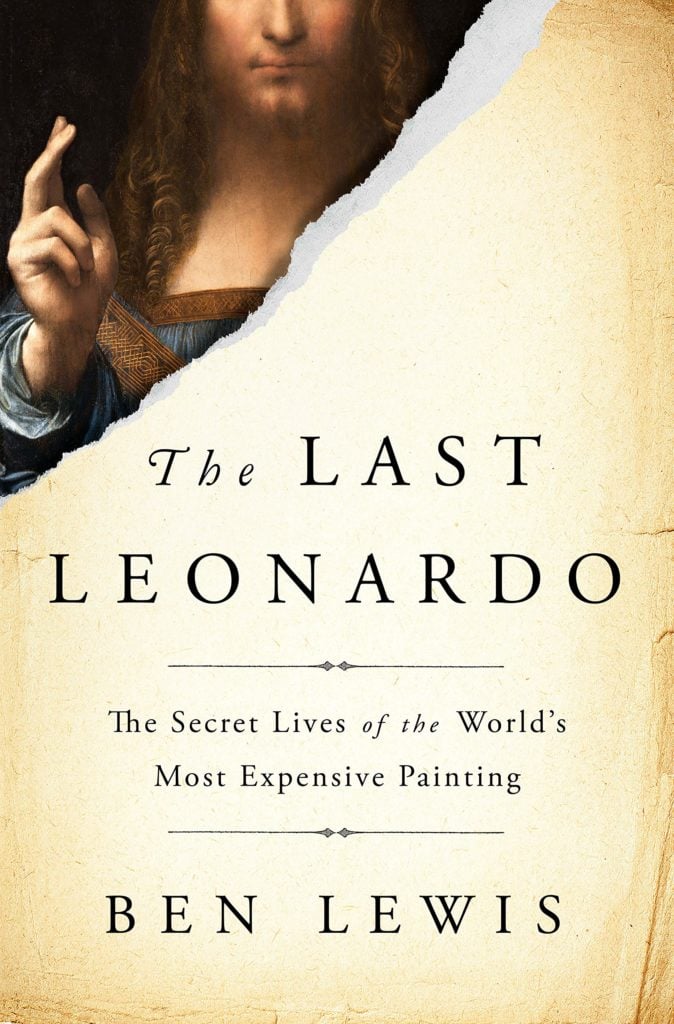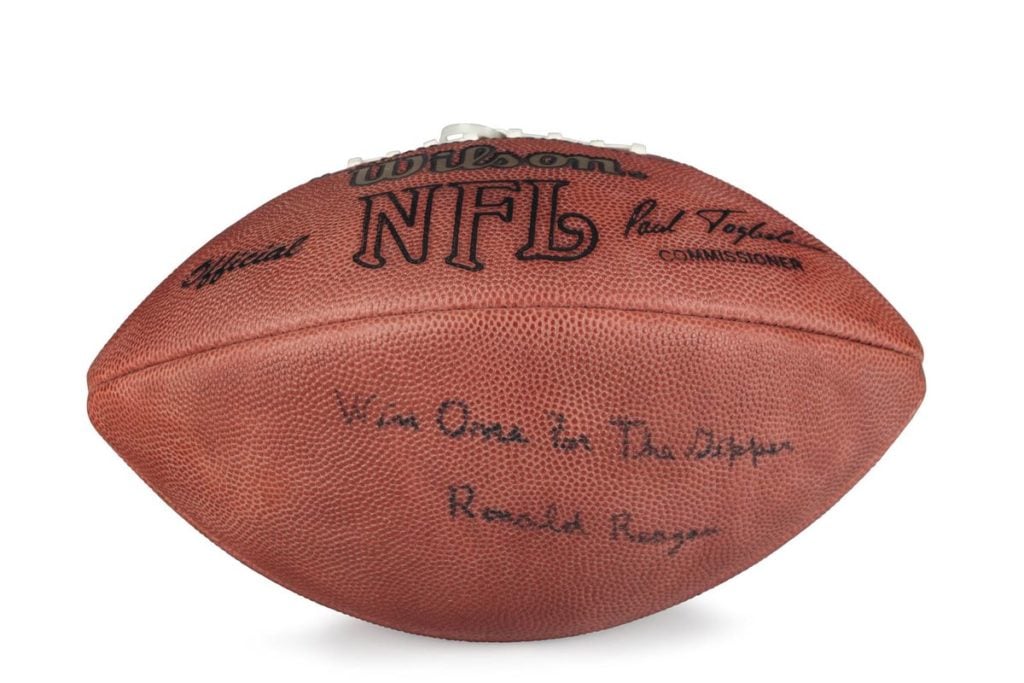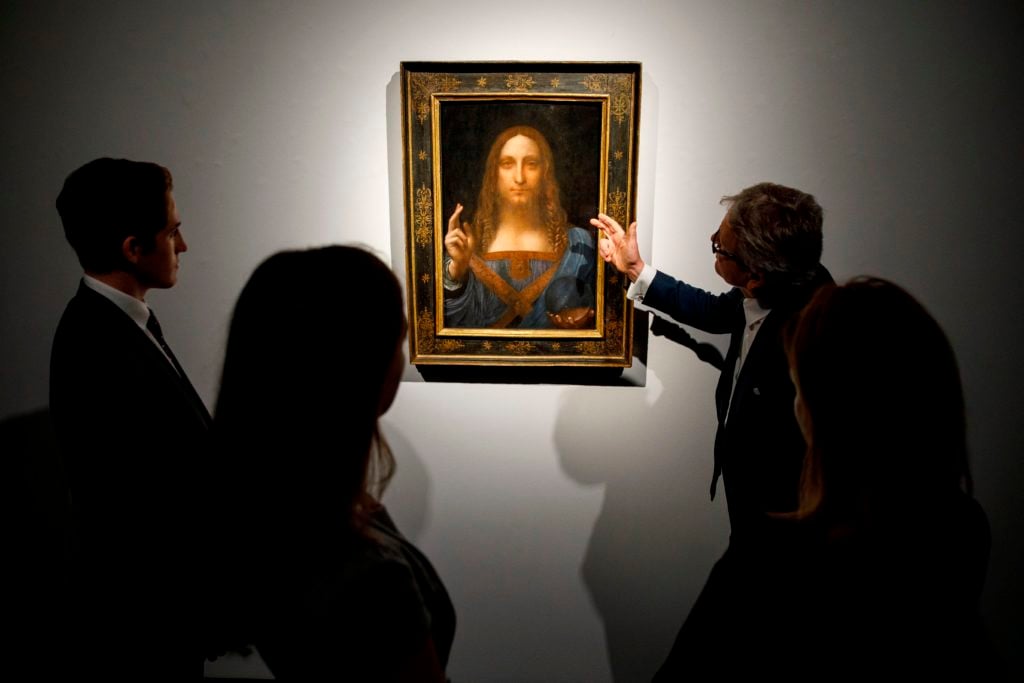Every Monday morning, Artnet News brings you The Gray Market. The column decodes important stories from the previous week—and offers unparalleled insight into the inner workings of the art industry in the process.
This week, questioning the entire premise of a supposed art-market controversy…
LORD, SAVE US
On Wednesday, Dalya Alberge of the Guardian pulled together the prickly threads of a(nother) scandal regarding Leonardo da Vinci’s Salvator Mundi, the endlessly news-making, endlessly disputed painting that has been absent from public view since it sold for over $450 million at Christie’s New York in November 2017. Rather than fixating on its whereabouts, the newly surfaced conflict concerns an older chapter in the work’s colorful history. But even after turning back the clock a few years, I think the drama is still comically out of step with the long-established realities of the international art trade.
The clash concerns whether or not Salvator Mundi was actively being offered to potential buyers while it was on view in a Leonardo survey at London’s National Gallery between November 2011 and February 2012. Old Master dealer Robert Simon, who then co-owned the work with dealer Alex Parish and assorted others, stated in a press release a few months prior to the show’s debut that Salvator Mundi was “privately owned and not for sale”—a policy that would satisfy what the Guardian terms the “unwritten rule” that public collections should refrain from exhibiting works available on the open market.
Simon recently doubled down on his claim in the London Review of Books after art historian Charles Hope published a lengthy piece implying otherwise in the publication’s January issue. Although the main thrust of Hope’s missive is to attack the painting’s attribution to Leonardo, his critique also includes a pointed description of the work as “supposedly not for sale” just before alleging that Simon and Parish “began to look for buyers soon after the exhibition closed,” based on fellow art historian Ben Lewis’s Salvator Mundi-dissecting book The Last Leonardo.

The “bitter row,” to quote the Guardian, escalated further last Wednesday, when Lewis himself wrote his own letter to the London Review of Books claiming evidence that the painting had been shopped for more than a year prior to the National Gallery exhibition, in addition to immediately after it. If true, his contention would mean that Salvator Mundi had been on offer for all but the four months it was on public view in London… which would also suggest to anyone who believes humans are even slightly less than wingless angels that the painting was on the market during the National Gallery’s exhibition, too.
Here’s what I initially found both hilarious and baffling about the outraged reaction to these revelations, though. As Hope admits, it was public knowledge by 2011 that Salvator Mundi was owned by a consortium of Old Master dealers led by Simon.
Let me repeat that: we knew the painting was owned by dealers.
So of course it was available while the show was going on! Why on earth would anyone familiar with the concept of an art dealer need specific evidence suggesting the painting was offered before and after the exhibition in order to land on that conclusion? Expecting anything else would be like giving a fur trapper a “pet” chinchilla and being surprised when they turn its pelt into a hat. The job is the job, folks.
But I don’t think Simon is lying when he states that Salvator Mundi was, officially speaking, not for sale during its four months hanging in the National Gallery, either. (He told Artnet News: “I can state absolutely, categorically, without any doubt, prevarication, or question, that the Salvator Mundi was not for sale, actually, effectively, or implicitly, at the time of the Leonardo exhibition at the National Gallery.”)
But maybe it’s a misunderstanding of the for-sale/not-for-sale paradox that is responsible for what strikes me as an unnecessarily scandalized response to the news from various corners of the art world. The key point is this: In the international art market, especially the upper reaches of the resale market, “not for sale” is a bargaining position—whether the party voicing those three magic words intends to stand by them in the moment or not. This means it can be literally true and substantively false at the same time. And this has been the case for at least the past 30 years, if not longer.

This Ronald Reagan-signed football sold for $93,750 on estimate of $5,000–10,000. Courtesy of Christie’s.
MANUFACTURING A MARKET
Now, I may only have had this thought because the Super Bowl was this weekend, but an American football analogy helps explain what I see as the crux of this latest clash over Salvator Mundi.
NFL fans are familiar with the concept of a quarterback “throwing a receiver open.” For the uninitiated, the idea is that one player advances the ball upfield by rifling it into a spot that only his teammate can reach, even if a defender is doing an excellent job of covering that teammate. The secret? The throw’s placement forces the receiver to move away from his current position. If the quarterback accepted the circumstances as they were instead of taking action to change them, the gain wouldn’t materialize.
The reality is that the most ambitious art dealers do the mercantile equivalent of “throwing receivers open” all the time. In fact, this strategy was more or less pioneered by Larry Gagosian when he took over the resale market in the 1980s: Gagosian sold works available.
What does that mean? Consider this excerpt from Michael Shnayerson’s Boom, which charts the rise of the contemporary art market in New York from the postwar era to the present:
Gagosian rarely waited to hear that a collector was putting a painting up for sale. He cadged invitations to collectors’ homes, memorized the paintings on their walls, and on occasion—or so it was said… took surreptitious snapshots of them. Then he called other collectors who might want to buy them. How much would the prospective buyer pay? $20,000? Back he went to the unwitting seller to announce that if he was willing to part with the painting in question, Gagosian had a buyer who would pay $20,000 for it. No? Not enough? What would it take, then, for the now-witting seller? $30,000? Back went Gagosian to the buyer….
In other words, Gagosian regularly shook loose pieces that were “not for sale” by understanding that, in principle, “not for sale” is just a synonym for “better offer required.” The stance is just as effective if it’s sincere or if it’s a total bluff. Grasping this lesson was one of Gagosian’s keys to becoming the ruler of the resale market decades ago, and it’s been a page in the playbook for every dealer since.
Despite being a crass American millennial, then, I understand the previously mentioned custom that works exhibited in public institutions should not be for sale. I just think it’s naive at this point in history. Galleries regularly underwrite museum exhibitions and actively sell what’s on view inside them. Biennials, once walled off from commerce, have been high-art shopping malls for years. Even if a dealer adheres to the letter of the unwritten rule by refusing to initiate or finalize the sale of a work while it’s on view, that doesn’t mean the display can’t still be a crucial plank in the sales strategy.
(And by the way, if most viewers believed this alleged conflict of interest was a genuine problem, legislators would be pushing for a dramatic increase in public arts funding instead of the opposite. So don’t blame starving institutions for accepting private largesse and programming their slates with potentially-for-sale artworks that they hope will maximize attendance, particularly if you don’t want them to use their endowments for operational expenses.)
To me, this is why it’s silly to be scandalized by the details of who did, or did not, offer Salvator Mundi to whom at what time vis-à-vis the National Gallery show, especially nearly a decade after the fact. No matter what Simon and company said or meant in 2011, it was available then. I’d also argue it’s available right now (assuming it’s intact). It’s always available, because that’s how the market works. It’s just a matter of whether someone has made the right offer yet—or whether the right dealer has managed to generate it. And if you’re unhappy about what that means for institutional exhibitions, the only thing that could reverse the situation now is divine intervention.
[The Guardian]
That’s all for this week. ‘Til next time, remember: whether we’re talking about the art market or high crimes and misdemeanors, circumstances can make almost any rule open to interpretation.









